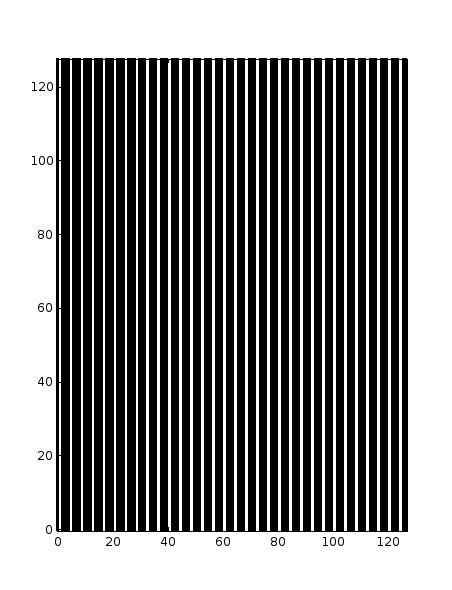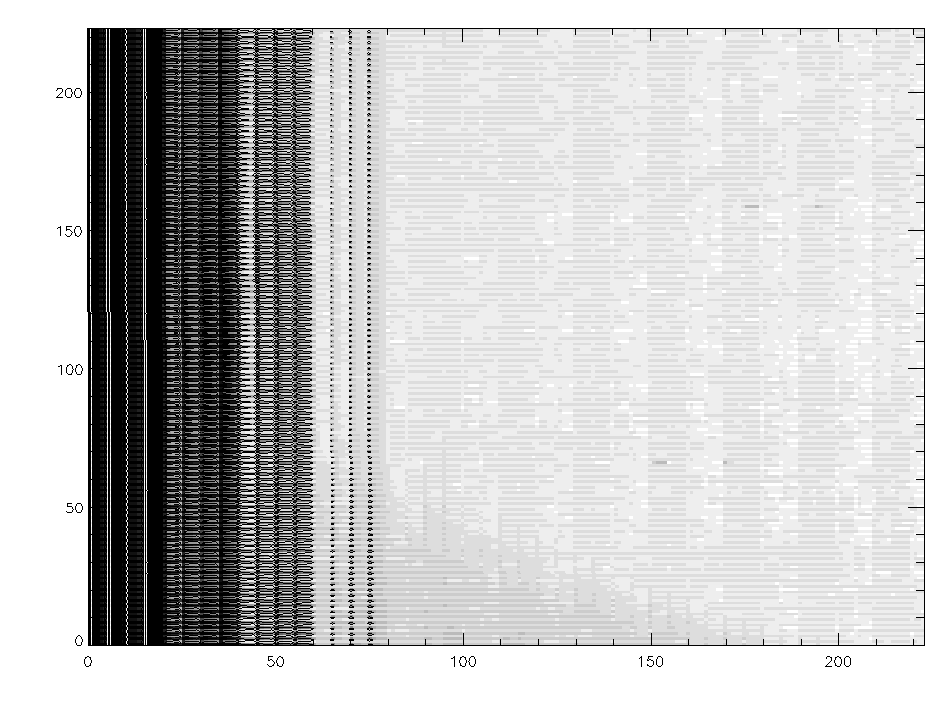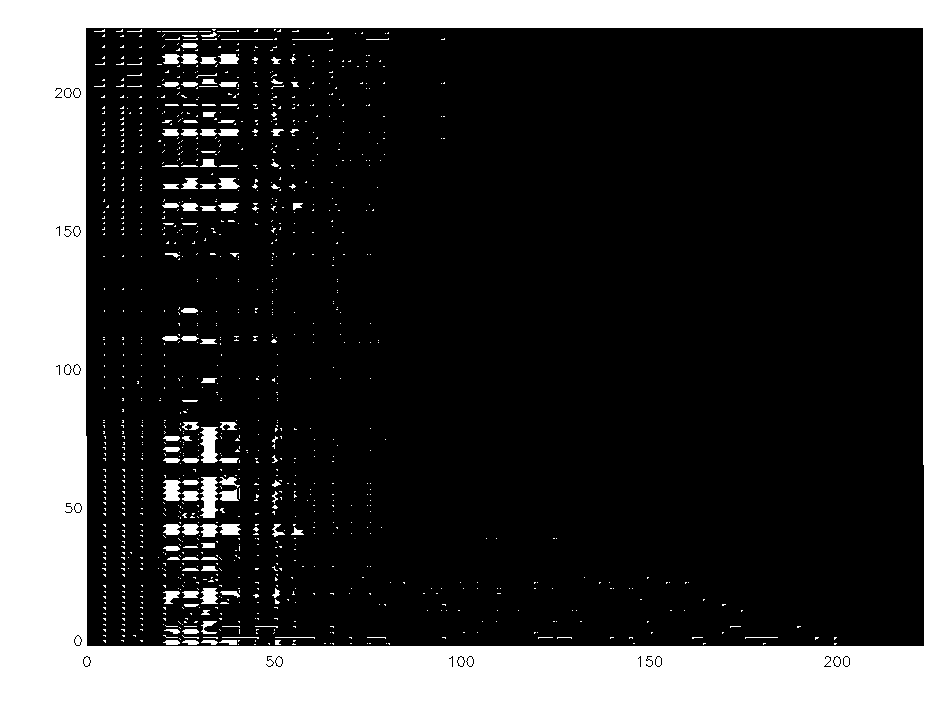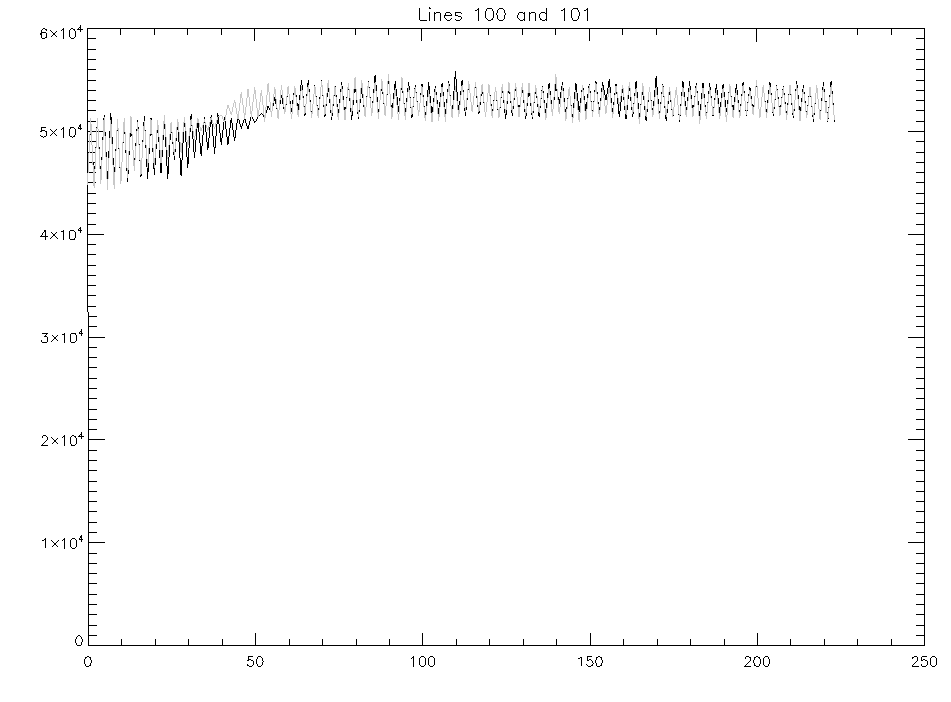NASACAM:Anderson Notes
Summer 2011
2011 May:
Determining why Vdetcom is shorting out.
Matt created a wiki account .
No shorts found in wiring harness or across card.
Begin work to get DSP code running on Mac or Windows 7.
2011 June:
Continue work on DSP code as it is needed for further debugging of Vdetcom short.
Information for updating the tim script for use under Wine can be found here: media: WineScript.pdf in an email from Bob Leach.
Other information on the electronics system and software, including login information for Astro-Cams, can be found here: Leach Electronics
June 10: More info on Wine can be found at http://wiki.winehq.org/FAQ
Wine + DSP Assembler installation on lab computer. Fedora Version Running: Fedora release 7 (Moonshine)
cmd: more /etc/redhat-release
Install Wine:
cmd: yum install wine Wine installed.
DSP Versions:
ASM Class 56300 DSP Gen III
Debugging Process:
Used chmod -x to make the script Wine_tim executable. Throws 2 errors. 1. :Bad Interpreter 2. No such file or directory. Fixed with dos2unix Wine_tim.
DSP SUCCESS!
DSP compiled with no errors... No testing of if the tim file works yet. Wine_tim is the script for compiling the dsp code. Wine_tim is found in /home/matt/Desktop/DSP/ Command to compile is ./Wine_tim timboot.asm, timIRmisc.asm, and timmisc.asm must be present in directory for compiler to work.
DSP Check.
New timing files have been checked via diff command. Files are identical except that in some cases an additional digit has been added to the ends of some values. These digits come after the decimal place and are always zero so no change in voltage should be observed.
VSS1 pin # 19 at DB37 reads -1V as listed in CRC744.waveforms. VSS2 pin # 17 at DB37 reads -1V as listed in CRC744.waveforms. VDDCL pin # 16 at DB37 reads -1.7V as listed. VDDUC pin # 33 at DB37 reads -3.5V as listed. VRSTUC pin # 14 at DB37 reads -3.5V as listed. VDDOUT pin # 32 at DB37 reads -1.2V as listed. VOFFSET pin # 15 at DB37 reads -1.5V as listed. VGG1 pin # 13 at DB37 reads -3V as listed. VGG2 pin #31 at DB37 reads 0V as listed. VSSSCANF pin # 12 at DB37 reads -1V as listed. VSSSCANS pin # 11 at DB37 reads -1V as listed. VDET pin # 29 at DB37 reads 0V as expected (the short).
NOTE: Wine_tim is only executable as superuser at this point.
2011 July:
VDET short found. A split in the insulator around the insulator has cracked such that when bent, the conductor is exposed and causes the short. The wire is being replaced. The other wires of the same material are being checked and replaced if necesary.
AT LEAST 2 OTHER WIRES IN THE FEED THROUGH ARE IN DANGEROUS CONDITION. THE WIRE IS VERY HEAVY AND STIFF AND SHOWS EVIDENCE OF A CREASE CAUSED PERHAPS BY BEING CAUGHT IN THE HEAT SINK. FOR THE SAFETY OF THE ELECTRONICS IT IS NECESSARY TO REPLACE SEVERAL, IF NOT ALL OF THE CONSTANTIN WIRES THAT WERE SOLDERED BY THE PEOPLE WHO INSTALLED THE COAX INTO THE WIRE HARNESS.
2011 August:
Rewiring of feed-through completed. Connections and wiring layout confirmed. Leach Electronics timing board upgraded and video board repaired of blown pins.
2012 June:
The old laptop used for camera control is being replaced by the lab IMAC. IRCamMain has been updated to run in Python 2.7 without the numarray library as it was not brough up to the 2.7 version. Numpy takes over all functionality from numarray. Python 2.7 is installed via macports, but there is an outstanding issue where macports runs in 64bit mode which is incompatible with the MIRC Clone being used in the lab. Currently Python 2.7 is being installed in a Universal Form that should allow 32 bit functionality. (6/27).
Ongoing Wiring Problems:
Upon several occasions, wires have been pulled out of their solder cups on the feedthrough. I think this is due to the stress applied to the joints when the feedthrough is in place. The current plan is to glue the wriring with stycast once things are known to function. As of last cooldown, there was a problem. A vertical striping pattern was seen on the readout which led me to believe that there was a wire dislodged. No such wire was found in the feed through. The internal wiring will also be checked for loose wires.
Running IRCam control on Imac:
To use the python control interface, python must be launched in 32-bit mode under the updated version of IRCamMain.py. This file is located in /Users/monnierlab/Subversion/MIRC/NASACAM_python/IRcamNumpy. (The numarray library is not used in Python 2.7, so everything has been updated to Numpy. In theory, everything will behave the same as it did under the old version. <- But not necisarily!) To run control interface use $arch -i386 python IRCamMain.py The arch -i386 command forces the computer to run the 32-bit version of python 2.7. (6/28)
When installing the ports, the universal variants must be used. This will install both 32 and 64 bit versions of the ports.
port install XXXXXXXXX +universal will install the universal variant (07/18/12)
Note: Be careful if installing matplotlib, this will default to tkinter graphics but existing control interfaces use gtk2. port install py27-matplotlib +gtk2 will intsall the proper version.(07/18/12)
2011 July:
Communications socket still hangs on occasion. Commonly this occurs on 'Config Camera' or 'Start Exposure'. (7/17) Traceback (most recent call last):
File "/Users/monnierlab/Subversion/MIRC/NASACAM_python/IRcamNumpy/mainWindow.py", line 1079, in updateDoImageSave
self.ircc.updateDoImageSave()
File "/Users/monnierlab/Subversion/MIRC/NASACAM_python/IRcamNumpy/IRCamCommands.py", line 217, in updateDoImageSave
self.sock.send('SD')
AttributeError: 'NoneType' object has no attribute 'send'
This error usually accompanies a socket failure on the interface machine. On the control machine, this gives a segmentatoin fault. Restarting the terminal program on the interface machine and the server on the control machine fixes this problem.
Camera shows white and black vertical stripes. It appears that every 4th column is white.

Note: On further examination, the bars do not appear to be of consistent width.
Resistance testing of the analog signal paths seems to suggest that there is a problem with VSS1. Testing on 9/8/11 showed a resistance of 1.185 M Ohms between VSS1 and ground. Testing today (7/17/12) measured an overload suggesting that the wire may be disconnected. Further testing data is in the project notebook page 41.
The camera is now warming back up 8 pm. (7/17/12)
Camera is warm and open. (7/23/12) Checking of wiring connections reveals no connection problems. Confirmed and updated wiring layout for the internal wiring harness: File:IRCamWiring.xlsx Visual check of the wires found 2 splits in the insulation on the VSS1 wire. These splits could explain the anomalous resistance measurements on 7/17. This wire will have to be replaced. The splitting of the insulation brings our plan to stycast the connectors as we could not easily replace a wire that split if the connectors are epoxied over.
Wiring information.(7/24/12)
Information has been gathered about the constantan wiring used int he dewar wiring harness because of the failures.
- The wire installed by us are fine gage, single strand, insulated thermocouple wire supplied by Omega Engineering Inc. Product page: [1]
- The wire is insulated by extruded PFA, a insulation manufactured by the Dupont Company. Info Sheet: File:DuPontPFAInfoSheet.pdf
- Service Temperature listed b y Dupont is -240 to 160C,
- Mechanical test shows that very little pressure is needed to compromise the insulation.
A piece of the wire was placed between to pieces of metal. Tightening a bolt between them allowed pressure to be applied. High pressure will push the insulation off of the wire. Even moderate pressure distorts the distribution of the insulation around the wire enough to cause problems.
Spring 2013
- Filterwheel re-documented, number scheme was indeed backwards. File of documentation have been uploaded. (1/15)
Media: Filters.pdf Updated Filter Positions (1/15/13)
Media: FilterPositions.pdf Supporting Documentation for Above (1/15/13)
- Detector retaining hardware was found to be loose. This could be the cause of the problems with the readout. Nuts have been retightened and a second nut has been added to each screw to act as a jam nut to keep this from happening again. (1/15)
- Notes: tim.lod switched from the 2/12 version to 1/18 version.
DATA SETS: (2/16/13)
0-4 Cold Plug: Setting 1 on filter wheel. Lab lights off. First exposure after power-up writes to these files. (Settings: 224,224,4,4,5,50,50,10,15) (OPERATION NOTE: MIRC CRASHED WITH RTSCHEDULER AND SPOOELER RUNNING) 5-9 J-Band: Setting 6 on filter wheel. Lab lights off. (Settings: Same as 0-4) (MECHANICAL NOTE: FILTERWHEEL STOPS ARE NOT ENGAGING. LINING NUMBERS UP IN WINDOW) 10-14 J-Band: Setting 6 on filter wheel. Lab Lights off. Light source on, fiber illuminated collimator. (Settings: Same as 0-9)(LIGHT SOURCE: FOLDED OVER INDEX CARD PLACED IN LIGHT SOURCE GAP)
- Notes: (2/17/13)
- **CONTROL COMPUTER THINKS ITS TODAY IS 2/18/13 AND FILES ARE LISTED ACCORDING TO ITS SCHEME. **
Start exposure hung initially. After IRCam restart, RTScheduler fails to restart. Terminal reads as follows:
mirkwood:/home/xche/NASACAM# ./RTscheduler 60000 Calling mmap ... mmap fd = 0s77578000 start Create pipe0: sem_task created JDM: for NASACAM, No target task!
- Restart control computer to fix.
DATA SETS: (2/17/13) ***These sets are also bad.
(Settings: 224,224,4,4,5,50,50,10,15) First 3 tries, spooler did not work. I think savenum wasn't updated.... 0-4 Cold Plug: Setting 1 on filter wheel. Lab lights off. 5-9 J-Band: Setting 6. Light source on striaght up. 10-14 J-Band: Setting 6. Light source off.
- Light spot appears in the IRCam display and then disappears. In the files, the spot cannot be seen.
- Visuals from Data Sets: (2/17/13)
Raw image of exposed detector to light source.

- IDL Script
;;;im1 is mirc0010.fits from feb 18 2013: J-Band Dark.
im1=readfits('/Users/monnierlab/NASACAMDATA/2013Feb/2013Feb18/mirc0010.fits',header1);
;;;im2 is mirc0005.fits from feb 18 2013: JBand,Lightsource on.
im2=readfits('/Users/monnierlab/NASACAMDATA/2013Feb/2013Feb18/mirc0005.fits',header1);
;;; index is frame number
index=20 ;
dark=im1[0:223,0:223,index];
light=im2[0:223,0:223,index];
;;; Dark Subtraction
image=light;
image_cont,image
end
- IDL Script
;;;im1 is mirc0010.fits from feb 18 2013: J-Band Dark.
im1=readfits('/Users/monnierlab/NASACAMDATA/2013Feb/2013Feb18/mirc0010.fits',header1);
;;;im2 is mirc0005.fits from feb 18 2013: JBand,Lightsource on.
im2=readfits('/Users/monnierlab/NASACAMDATA/2013Feb/2013Feb18/mirc0005.fits',header1);
;;; index is frame number
index=20 ;
dark=im1[0:223,0:223,index];
light=im2[0:223,0:223,index];
;;; Dark Subtraction
image=light-dark;
image_cont,image
end
- Row Analysis on the lit detector. (Actually rows 100 and 103, not 101 as the plot title says...)
- IDL Script
im1=readfits('/Users/monnierlab/NASACAMDATA/2013Feb/2013Feb18/mirc0010.fits',header1);
im2=readfits('/Users/monnierlab/NASACAMDATA/2013Feb/2013Feb18/mirc0005.fits',header1);
light=im2[0:223,0:223,index];
lline1=light[100,0:223]
lline2=light[101,0:223]
lline3=light[102,0:223]
lline4=light[103,0:223]
plot,lline1,title="Lines 100 and 101"
oplot,lline3,color=200
- Looks like the detector is saturated.
DATA SETS: (2/19/13) ***DATA SETS are useless, all on same filter setting. (Settings: 224,224,4,4,5,50,50,2,15)
0-19 Cold Plug: Setting 1 on filter wheel. Lab lights on. 20-39 M-Band: Setting 2. Light source off. 40-59 L-Band: Setting 3. Light source off. 60-79 K-Band: Setting 4. Light source off. 80-99 H-Band: Setting 5. Light source off. 100-119 J-Band: Setting 6. Light source off. 120-139 M-Band: Setting 2. Light source on. 140-159 L-Band: Setting 3. Light source on. 160-179 K-Band: Setting 4. Light source on. 180-199 H-Band: Setting 5. Light source on. 200-219 J-Band: Setting 6. Light source on.
- Camera Behavior (2/19/2012)
When the camera is running, the display in IRCam shows strange patterns on the left hand edge. With a light source present, the source will appear in the image, then disappear. It will reappear briefly if the aperture is covered, in which case the negative of the spot appears briefly before disappear, and the spot will briefly reappear once the aperture is uncovered.
- Swapped VOFFSETS: Was -0.7, IS -0.3. Detector appears to behave the same in the IRCam display.
- The version of tim.asm in the DSP folder is not the updated version....the 32-64 counter changes are not present. Checking to see if this is the version being used.
The timing file tim.asm in the general DSP folder is not an up to date version. If the tim.lod files were compiled with varying voffsets from this file, as I think they were, the timing is not correct.
- Swapped tim.lod from /2012Jan06/ into Current to try. Behavior looks the same as before.
- There are differences in the tim.lod and tim.asm files in some places, this is the motivator for trying different timing files.
- Trying tim.lod from /2012Jan18/. Still looks exactly the same,Behavior wise.
- Tim.lod from /2012Jan06/ is currently in /Current/.
- Spot appears when dial reads position 1..... filter stops are not felt when turning the filter wheel knob. I think the wheel is not turning.
Camera opened. Set screw on filter axel was loose so the filter wheel was not turning. Primary chipped at one of the supports. Primary was rotated off of chipped section and shim was added to the bottom support pads. This marginally changes the focus, but easily correctable on the input side.
DATA SETS: (4/3/13)
(Settings: 128,128,4,4,2,50,50,10,15)
0-19 Cold Plug: Setting 1 on filter wheel. 20-39 J-Band: Setting 6. Light source off. 40-59 J-Band: Setting 6. Light Source on.
DATA SETS: (4/4/13) Cold plug data taken at different VOFFSET values (Settings: 224,224,4,12,10,50,50,10,15)
0-4 VOFFSET=-0.5 8-12 VOFFSET=-0.7 13-15 VOFFSET=-0.3 There were spooler problems with images 5-7.
4/9/2013: Experiment:
Settings: 224,224,4,12,10,50,25,10,15 Resetting halfway through the set hopefully the reset can be seen by comparing frames across the reset. Filter Setting: 6 Lab Lights: ON CAUSES RTSCHEDULER TO SEG FAULT.
DATA Sets: (4/9/13) Lab lights on! VOFFSET=-0.3
Settings: 224,224,4,12,10,50,50,10,15 0-4 Cold Plug (1) 5-9 M(2) 10-14 L(3) 15-19 K(4) 20-24 H(5) 25-29 J(6)

